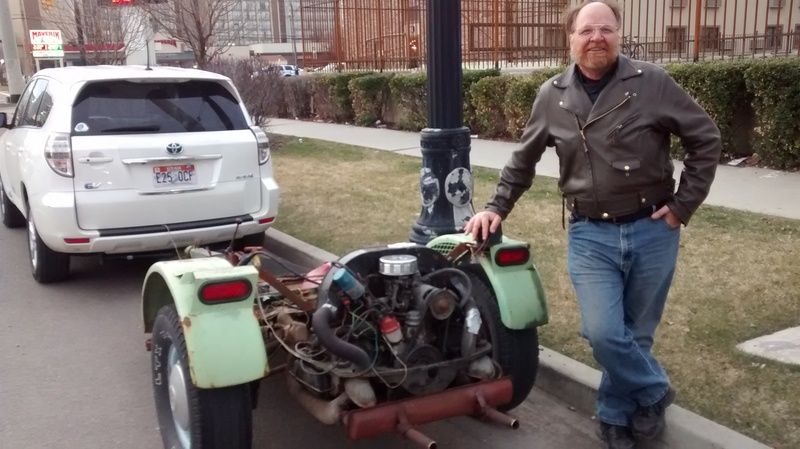sendler2112
Well-known member
A CVT motorcycle hitch hauler pusher with a CVT scooter would be very simple to rig up. With very little financial risk if it doesn't work out. The hitch hauler is $70. The used bike can be sold for what you paid for it. You would be out some kind of throttle control like a cable housing rig to run through the hatch. Or an RC transmitter and a servo.
.
A PCX is a really nice machine. Every able bodied person on the planet should have one as a means of transportation in addition to their car basically. But it doesn't have enough top speed in it's gearing. Under a heavy load like that it might not break 55 mph since the CVT will wind down a bit. And it might overrev on the down hills. You will want to pick a bike that can have an automotive tire mounted on the rear to get better life.
.
An NC700 with dual clutch auto trans would be deluxe. Dream come true pusher. Perfect power output for unlimited range. Highest BSFC moto engine ever made. By a long shot. And very clean with it's giant cat right off the head and O2 sensor. Auto trans. You could get good at popping the front sprocket off to tie the chain off of the rear if you were in an area that didn't need the bike running.
.
But a single wheeled pusher won't work at all on snowy roads with slush down the center.
.
http://www.northerntool.com/shop/tools/product_200409163_200409163?cm_mmc=Google-pla&utm_source=Google_PLA&utm_medium=Trailers%20%2B%20Towing%20%3E%20Motorcycle%20Hauling%20Accessories&utm_campaign=Ultra-Tow&utm_content=571648&gclid=Cj0KEQiAt9vEBRDQmPSow-q5gs8BEiQAaWSEDlL96IoM-X7wH90u63n9yRqmi-yebvOGrJGUQiBO5hYaAuFF8P8HAQ
.
A PCX is a really nice machine. Every able bodied person on the planet should have one as a means of transportation in addition to their car basically. But it doesn't have enough top speed in it's gearing. Under a heavy load like that it might not break 55 mph since the CVT will wind down a bit. And it might overrev on the down hills. You will want to pick a bike that can have an automotive tire mounted on the rear to get better life.
.
An NC700 with dual clutch auto trans would be deluxe. Dream come true pusher. Perfect power output for unlimited range. Highest BSFC moto engine ever made. By a long shot. And very clean with it's giant cat right off the head and O2 sensor. Auto trans. You could get good at popping the front sprocket off to tie the chain off of the rear if you were in an area that didn't need the bike running.
.
But a single wheeled pusher won't work at all on snowy roads with slush down the center.
.
http://www.northerntool.com/shop/tools/product_200409163_200409163?cm_mmc=Google-pla&utm_source=Google_PLA&utm_medium=Trailers%20%2B%20Towing%20%3E%20Motorcycle%20Hauling%20Accessories&utm_campaign=Ultra-Tow&utm_content=571648&gclid=Cj0KEQiAt9vEBRDQmPSow-q5gs8BEiQAaWSEDlL96IoM-X7wH90u63n9yRqmi-yebvOGrJGUQiBO5hYaAuFF8P8HAQ

